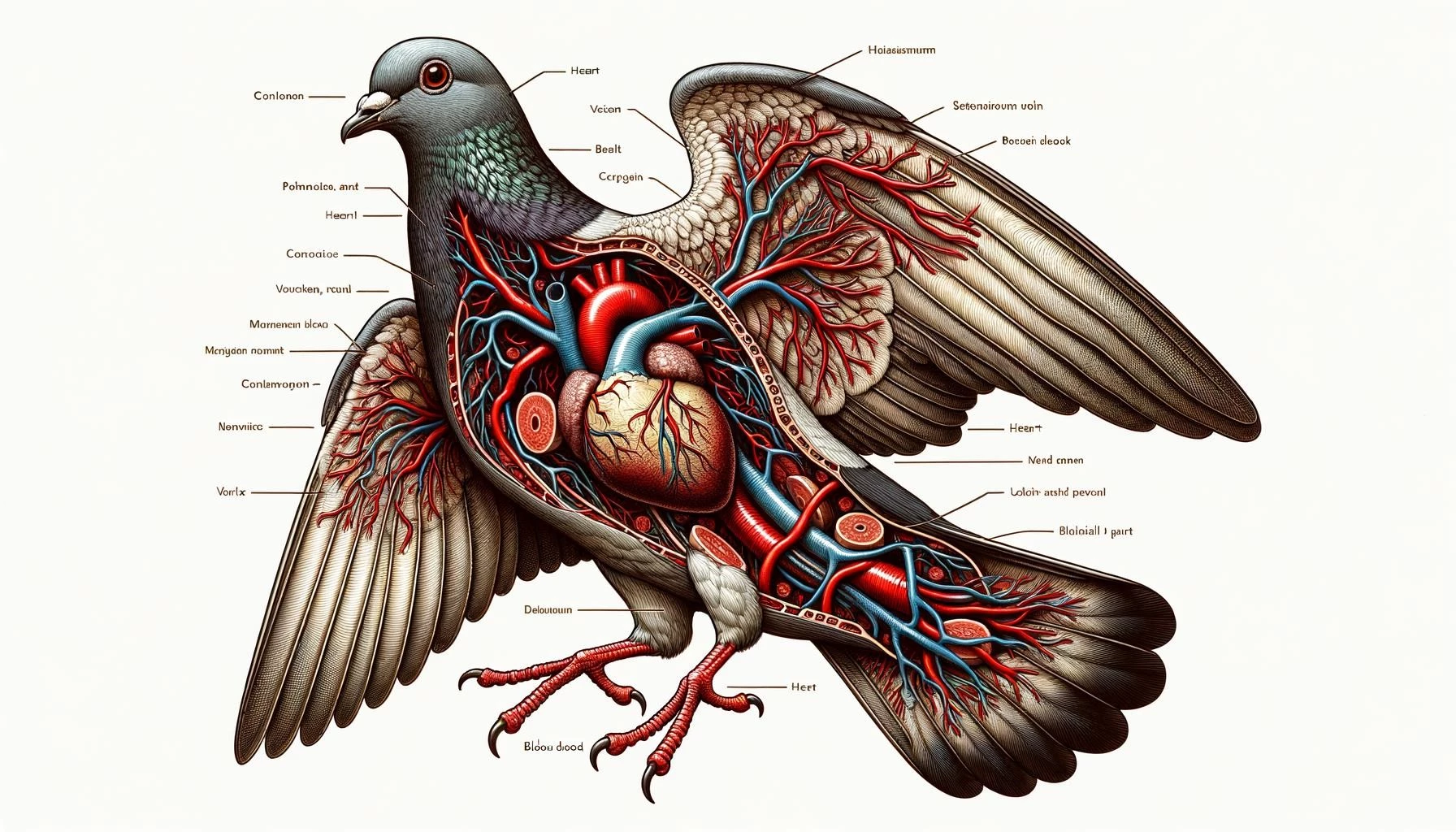Unraveling the intricate workings of nature, we discover the remarkable adaptability of the pigeon’s circulatory system – a testament to their aerial prowess. This complex system, comprising the heart, blood vessels, blood, and lymphatics, is fine-tuned to support the bird’s flight capabilities and metabolic demands. The pigeon’s cardiovascular system, coupled with its specialized respiratory system, ensures efficient oxygen delivery and carbon dioxide exchange, fostering endurance and sustained flight. Let’s explore the fascinating dynamics of the pigeon circulatory system and its pivotal role in these birds’ extraordinary flight abilities.
Key Takeaways
- The pigeon circulatory system consists of the blood vascular system and the lymphatic system.
- The blood vascular system includes the heart, blood vessels, and blood.
- The heart of a pigeon has four chambers: two atria and two ventricles.
- Three main blood vessels support the circulatory system: the aorta, pulmonary arteries, and vena cavas.
- The circulatory system in pigeons delivers oxygen, nutrients, and blood cells to the organs and tissues.
- The respiratory system in pigeons facilitates oxygen and carbon dioxide exchange through specialized organs like the trachea, bronchi, and lungs.
- The air sacs in pigeons play a crucial role in supporting flight by reducing the weight of the bird and ensuring a continuous flow of oxygen-rich air.
The pigeon circulatory system consists of the blood vascular system and the lymphatic system. The blood vascular system includes the heart, blood vessels, and blood, while the lymphatic system includes the lymph and lymphatic vessels.
The heart of a pigeon has four chambers: two atria and two ventricles. The atria receive deoxygenated blood, while the ventricles pump oxygenated blood to the body. Valves in the heart prevent backflow of blood and ensure proper circulation.
Three main blood vessels support the circulatory system in pigeons. The aorta, the largest artery, carries oxygen-rich blood from the heart to the tissues and organs. Pulmonary arteries deliver oxygen-depleted blood from the right ventricle to the lungs. The vena cavas, two large veins, return deoxygenated blood to the right side of the heart.
The circulatory system in pigeons delivers oxygen, nutrients, and blood cells to the organs and tissues. It plays a significant role in maintaining the pigeon’s body temperature and meeting the metabolic demands of flight. The high blood pressure in pigeons helps blood flow through the network of capillaries.
Pigeon Circulatory System: Respiratory System
The respiratory system in pigeons facilitates the exchange of oxygen and carbon dioxide. It includes specialized organs such as the trachea, bronchi, and lungs.
The trachea is the main airway that extends from the mouth and nostrils to the lungs. It is supported by rings of cartilage to prevent collapse during breathing. The bronchi, which branch off from the base of the trachea, carry air to the lungs. The lungs are spongy organs located in the chest cavity and contain small sacs called parabronchi.
Pigeons have developed adaptations in their respiratory system, such as having nine air sacs. These air sacs are divided into two types: anterior air sacs and posterior air sacs. The anterior air sacs are located in the chest and ensure a continuous flow of fresh oxygen-rich air, while the posterior air sacs, located in the abdominal cavity, reduce the overall density of the bird during flight.
Pigeon Circulatory System: Adaptations for Flight
The unique cardiovascular system of pigeons is well-adapted to support their flight capabilities. The increased blood flow to the muscles promotes endurance and sustained flight.
Pigeons also have adaptations in their blood cells, such as red blood cells that transport oxygen from the lungs to the tissues and organs. The respiratory system, with its specialized organs and air sacs, ensures efficient oxygen and carbon dioxide exchange.
These adaptations, along with the efficient circulatory system and high blood pressure, allow pigeons to have the necessary oxygen delivery and muscle power for flight. Understanding the pigeon’s cardiovascular system and respiratory system provides insights into their remarkable aerial abilities.









